Wanna save money and reduce food waste with homemade broth? Read on to learn how to make vegetable stock from scraps.
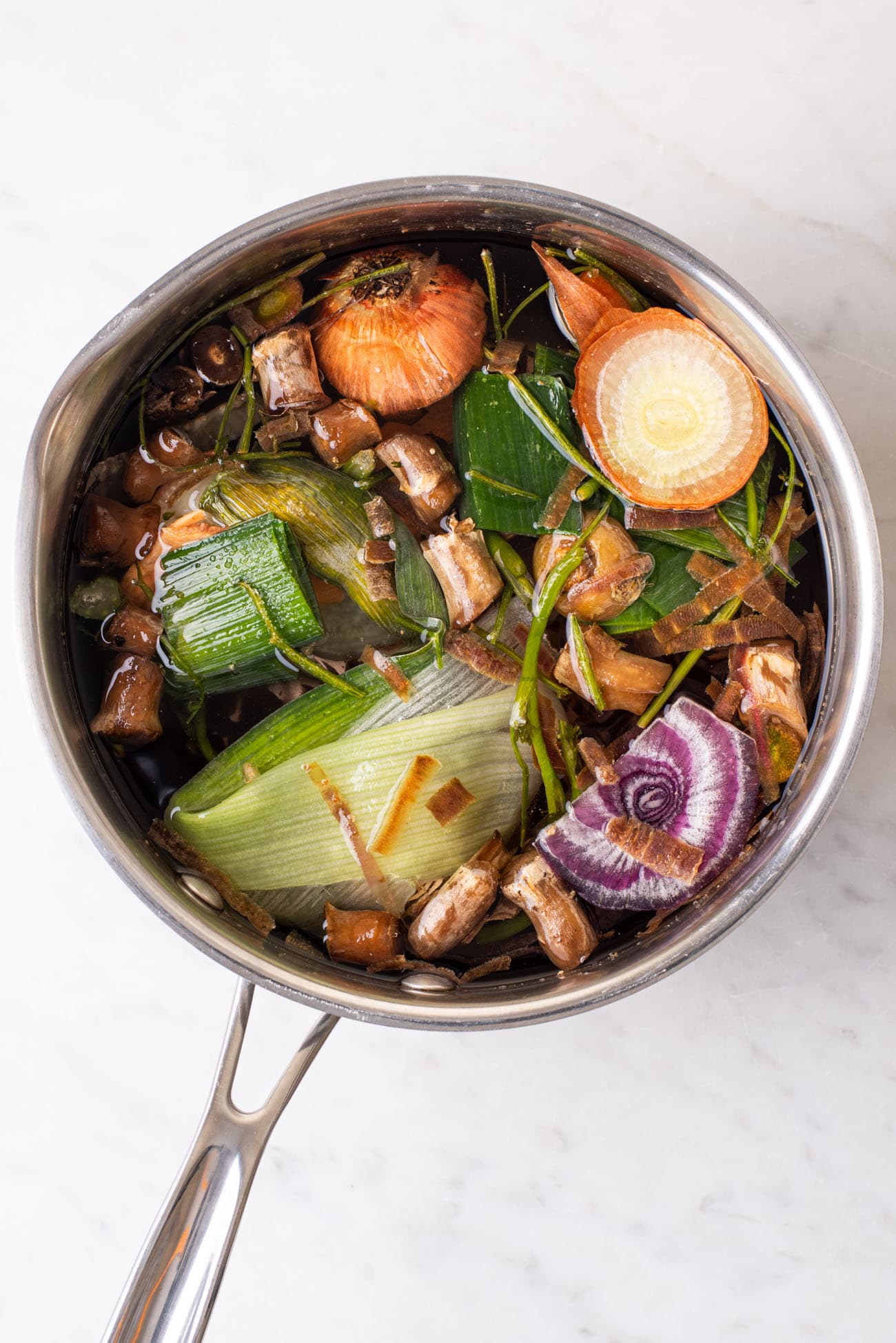
Here’s an unfortunate truth: when you buy vegetable broth, you are mostly paying for the packaging. That’s because broth is mostly water, with very little actual “vegetable” to speak of. So yeah, kind of a waste of money.
The great news is that making your own vegetable broth is a lot easier than most people assume. (You literally just put vegetables in a pot with water and salt, and less than two hours later: broth.) And making vegetable stock from scraps? That is a true power move. Read on to learn everything you need to know about this brilliant technique.
What is Vegetable Scrap Stock
The idea here is to save various veggie peels and ends (like onion skins, carrot peels, celery tops – more details below) and freeze them until you have enough to make broth. Then you simply simmer the scraps in water, strain them out, and bam: vegetable broth.
The point of using scraps instead of whole vegetables is to save full veg for scenarios where you’ll actually eat them – versus boiling the heck out of them and tossing them in the trash.
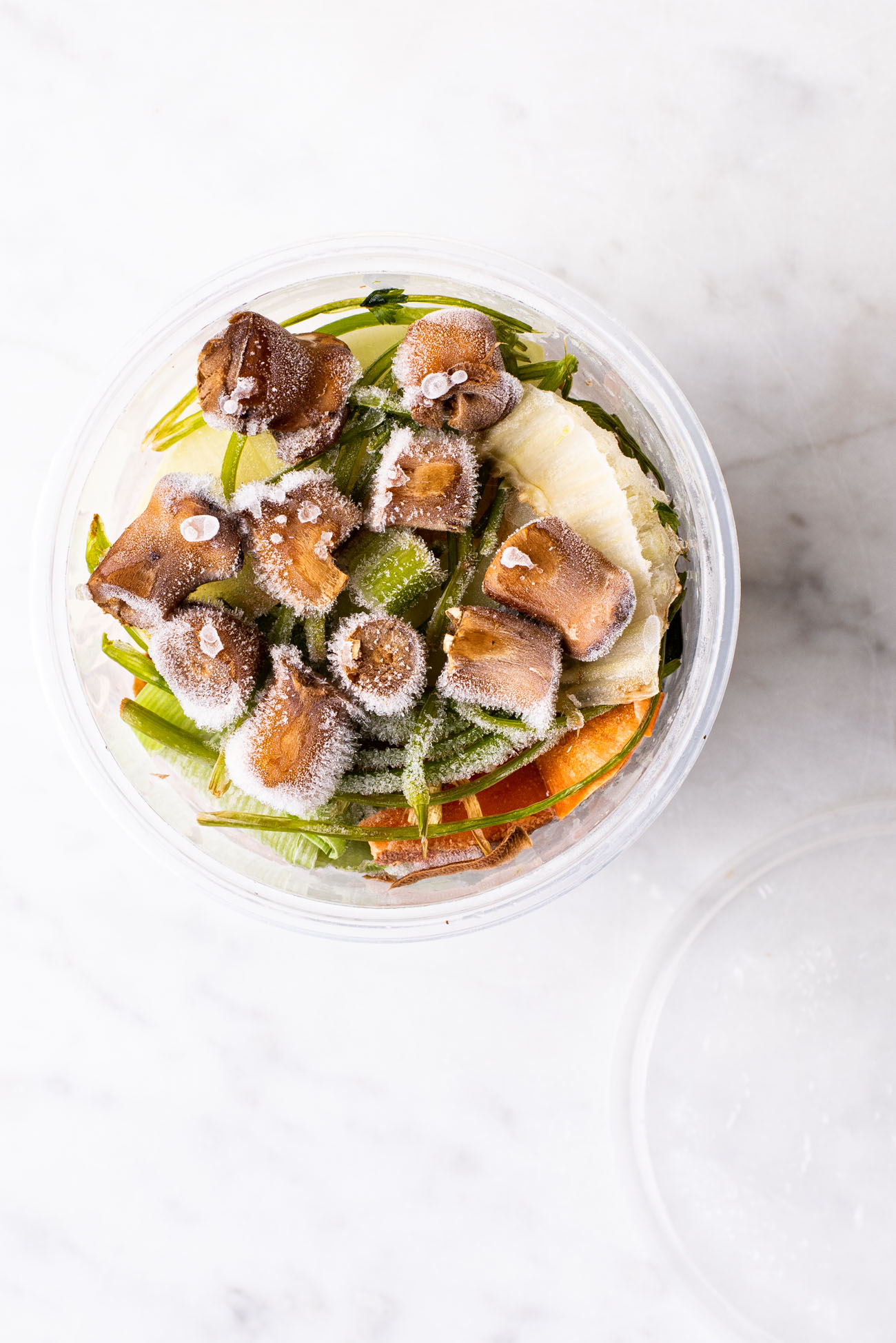
Why Make Vegetable Stock From Scraps
There are many benefits to adopting this technique in your kitchen…
- Saving money. Broth is mostly water, so when you buy it at the store, you’re mostly paying for the packaging.
- Reducing food waste. This technique repurposes scraps that would otherwise be thrown away.
- Reducing waste-waste. Less packaging to deal with keeps excess cartons out of landfills and oceans.
- It’s healthier. Homemade vegetable stock is better for you because it has less sodium and you can control the quality of vegetables you use. (A lot of store-bought broths are made from vegetable concentrates and contain preservatives.)
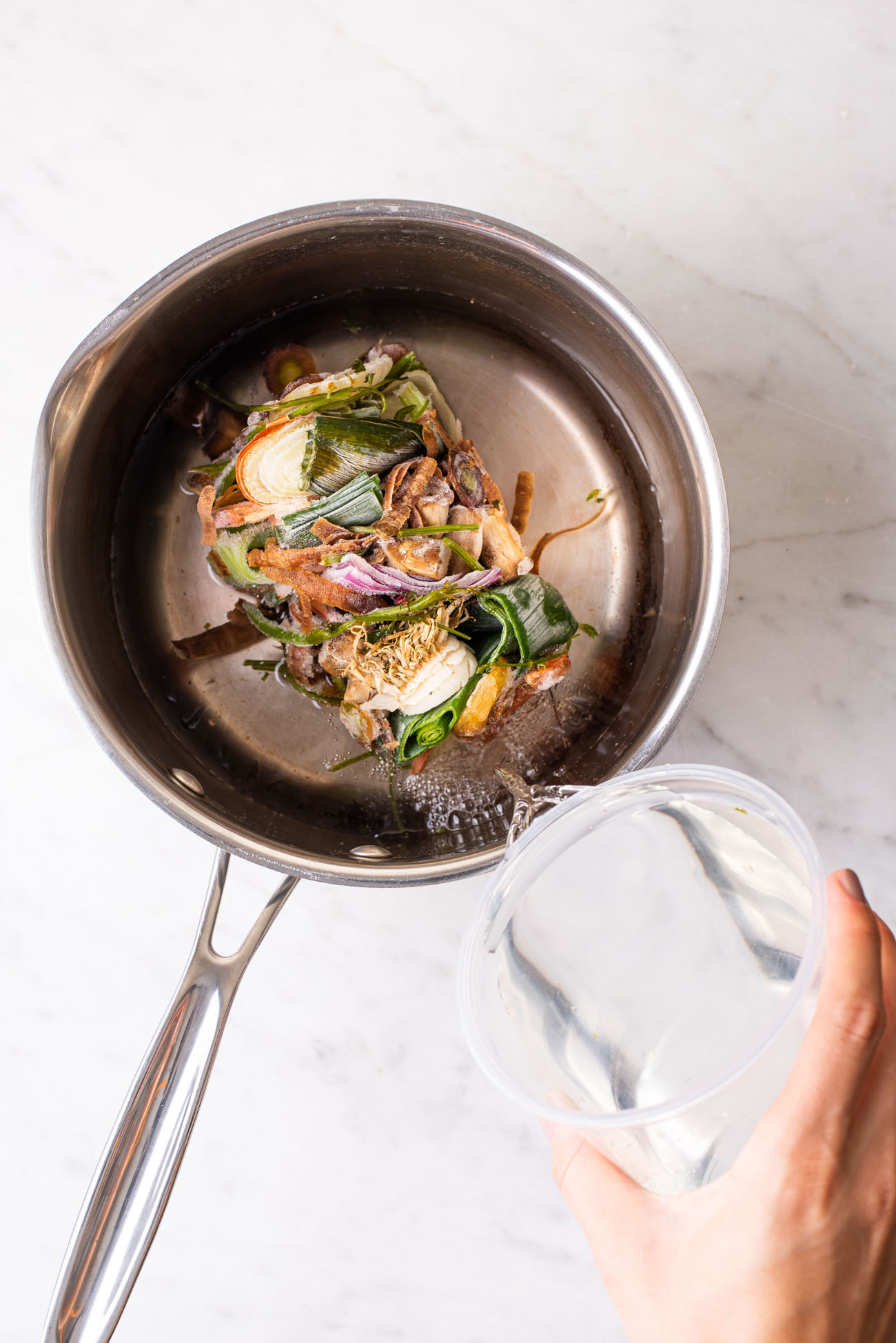
How to Save Your Scraps
Whenever I’m preparing a veg-heavy dish (like a soup or stir-fry), I keep an empty quart container near my cutting board, so if I have some scraps that fit the bill, I can save them right then and there. I keep the container in the freezer and add to it whenever I have scraps, until I have enough to make a pot of stock. (You can also use use a freezer zip-top bag.) You can keep frozen vegetable scraps for up to 6 months. And if you want to make broth right away, the scraps do not have to be frozen.
What Vegetables to Use for Scrap Broth
Not all vegetables are created equal as far as scrap broth is concerned. Only use vegetables whose flavor you’d typically want expressed in broth, like…
- Onion skins (yes, even the papery bits!)
- Carrot peels
- Celery tops
- Sweet potato skins
- Parsnip skins
- Leek greens
- Mushroom stems
- Fennel tops
- Corn cobs
- Herb stems (like parsley, cilantro, dill, etc.)
What Vegetables Not to Use in Scrap Broth
Avoid cruciferous veg – like broccoli, cauliflower, and kale stems – which can give broth a sulfuric taste. White potato peels should be avoided, too, as they will make your broth cloudy. Leave out other nightshades, too – like eggplant, zucchini, bell peppers. Beet skins are too earthy and will color the broth red. Don’t include lettuces, since they won’t contribute any flavor.
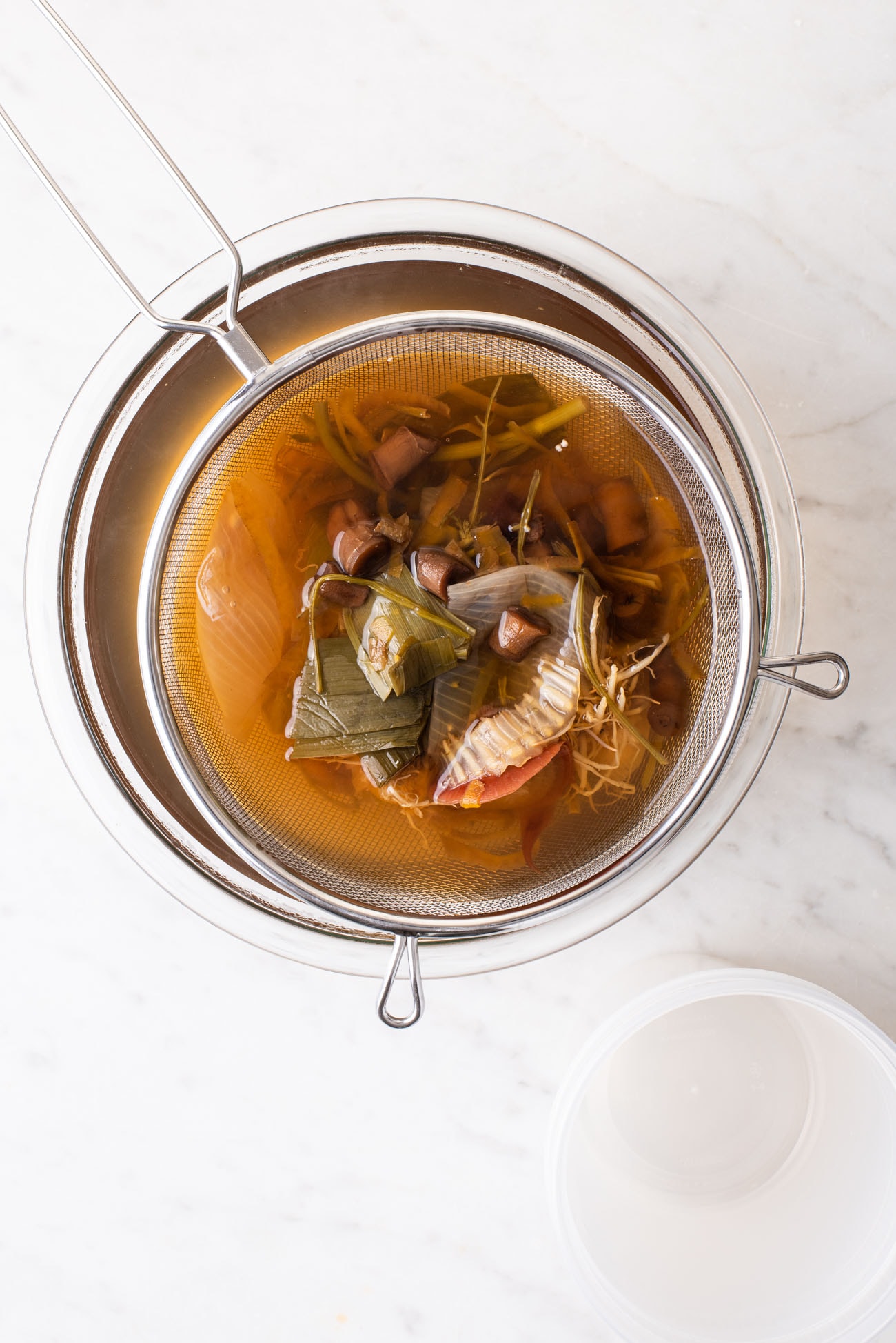
Additional Flavorings
The only extra thing I add is salt, which draws flavor out of the veggie scraps. You can also dabble with additional flavors like whole garlic cloves, bay leaves, and peppercorns.
How to Use Scrap Broth
Vegetable scrap broth is ideal for soups and stews, risotto and other grains, and for simmering lentils and beans. You can keep the broth in the fridge for up to 1 week, or freeze it immediately for up to 3 months. If you want to use frozen vegetable stock in a soup, no need to thaw it first – just put it directly into the pot and wait for it to melt.
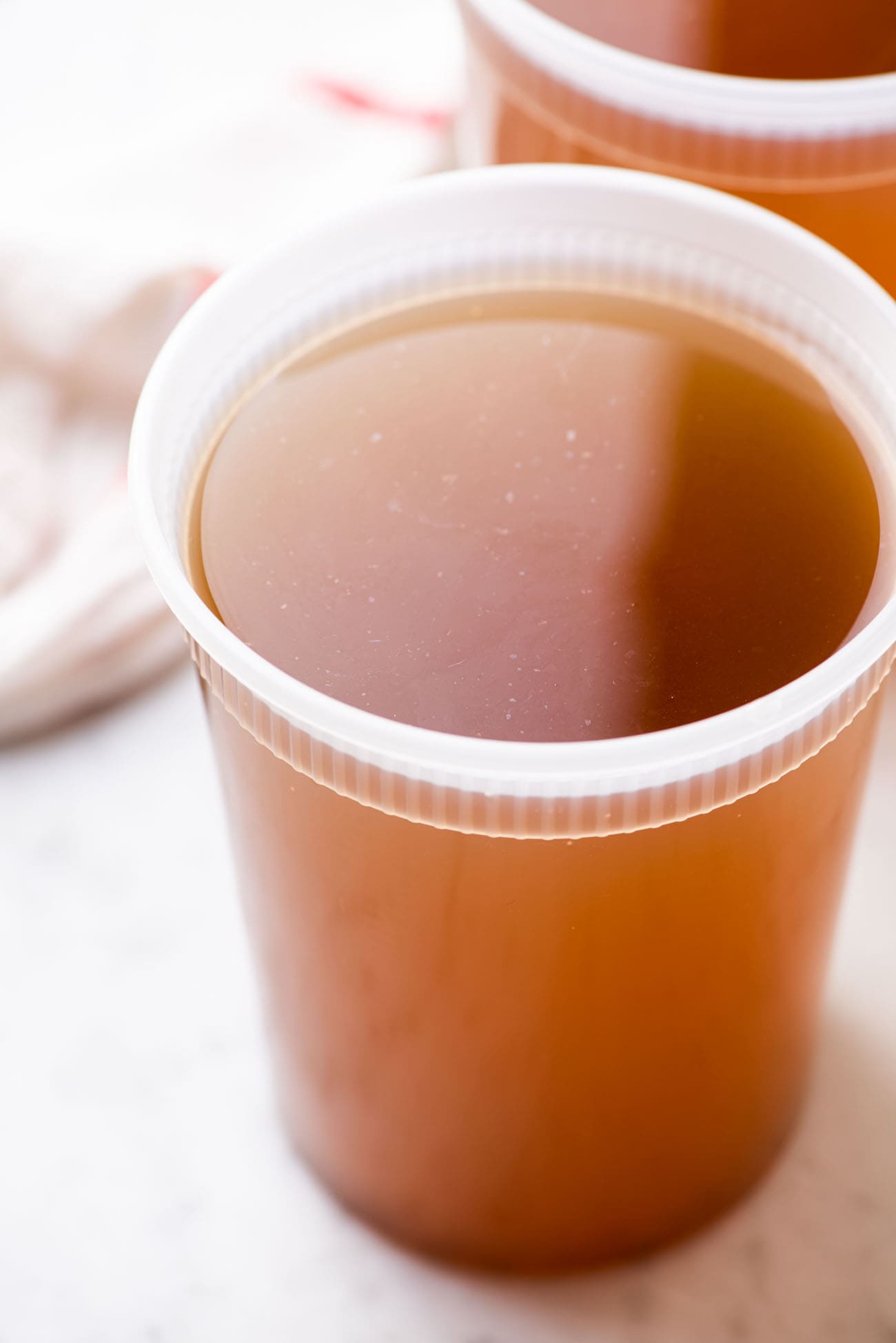
Let me know if you try this recipe! Give it a rating below and leave a comment, and don’t forget to tag @thenewbaguette on Instagram with your creation.
The Full Recipe
Print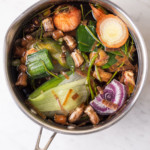
Vegetable Stock from Scraps
- Cook Time: 1 hour 30 minutes
- Total Time: 1 hour 30 minutes
- Yield: About 2 quarts 1x
- Category: Sauces
- Method: Stovetop
- Cuisine: n/a
- Diet: Vegan
Description
Making vegetable stock from scraps is a great way to reduce food waste, save money, and keep excess cartons out of landfills. Plus, it’s incredibly easy!
Ingredients
- About 1 quart (4 cups) frozen vegetable scraps* (see note below)
- 2 quarts (8 cups) water
- 3/4 teaspoon salt
Instructions
- Combine the scraps, water, and salt in a medium pot. Cover tightly with a lid and bring to a boil. Then reduce the heat to low and simmer gently with the lid ajar for 1 1/2 hours.
- Strain into another pot or a large bowl, and discard the vegetables. Divide the broth among lidded containers and cool to room temperature.
- Once cooled, store in the fridge and use within 1 week, or freeze for up to 3 months.
Notes
- My go-to scraps are: onion skins, carrot peels, celery tops, sweet potato skins, parsnip skins, leek greens, mushroom stems, fennel tops, herb stems (like parsley, cilantro, dill, etc.).
- Freeze scraps in a takeout-style quart container or freezer zip-top bag. Frozen scraps can be kept for up to 6 months.
Nutrition
- Serving Size: 1 cup
- Calories: 10

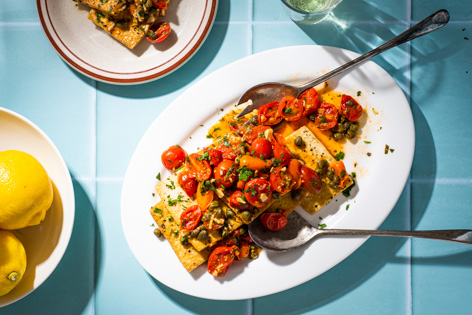
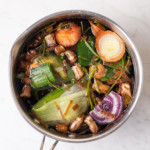
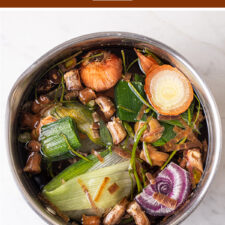
Deirdre Jon Kiernan says
Also I keep a quart container w a tight lid for veg leftovers, meat scraps, mashed potatoes to make soup with, and a separate for left over rice dishes that can go into chicken soup for a fast delicious meal. And finally, BONES! A chicken carcass an be a wonderful base for broth–just roast it for an hour before slipping it into a pot of boiling water. Pork bones are really good, too. And finally, the vegetable scraps you made broth with can cool and go straight to a compost heap. The bones need to go to the trash.
YtheWait says
Sooooooooo amazing!